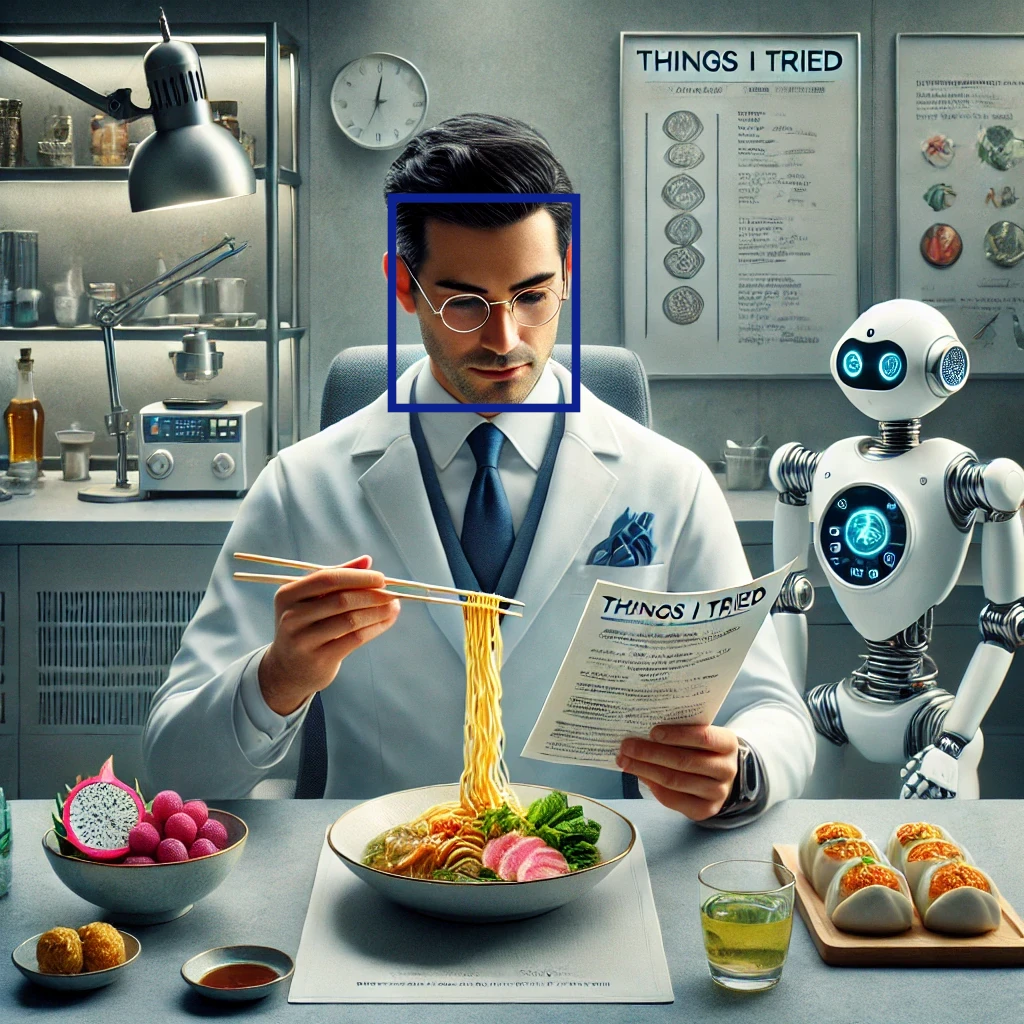I kind of want to do a crazy project like an AI powered game for my cat.
I want my program to recognize when my cat takes some kind of action, and do something in response. Ideally, the game would learn to amuse my cat, and tell if she is amused by looking at her.
In that vein, I decided the first step would be to get a python program to interact with my webcam. Using the python OpenCV package (cv2) I was able to get a snapshot from my webcam.
Here is that code:
webcam_snapshot.py
#webcam_snapshot.py
import cv2
# Open the webcam (0 usually corresponds to the first webcam device)
cap = cv2.VideoCapture(0)
# Check if the webcam is opened correctly
if not cap.isOpened():
print("Error: Could not open webcam.")
exit()
# Capture one frame
ret, frame = cap.read()
if ret:
# Save the captured image
cv2.imwrite('webcam_image.jpg', frame)
print("Image saved as 'webcam_image.jpg'.")
else:
print("Error: Failed to capture image.")
# Release the webcam and close any OpenCV windows
cap.release()
cv2.destroyAllWindows()Running it generates a file webcam_image.jpg
Now let’s see if we can get it to detect some kind of motion.
Here is the code:
webcam_capture_snap_upon_motion.py
#webcam_capture_snap_upon_motion.py
import cv2
import numpy as np
sensitivity = 50
# Initialize the webcam
cap = cv2.VideoCapture(0)
# Check if the webcam is opened correctly
if not cap.isOpened():
print("Error: Could not open webcam.")
exit()
# Read the first frame
ret, prev_frame = cap.read()
if not ret:
print("Error: Failed to capture image.")
exit()
# Convert the first frame to grayscale
prev_gray = cv2.cvtColor(prev_frame, cv2.COLOR_BGR2GRAY)
while True:
# Capture a new frame
ret, frame = cap.read()
if not ret:
print("Error: Failed to capture image.")
break
# Convert the current frame to grayscale
gray = cv2.cvtColor(frame, cv2.COLOR_BGR2GRAY)
# Compute the absolute difference between the previous and current frame
frame_diff = cv2.absdiff(prev_gray, gray)
# Threshold the difference to get the regions with significant motion
_, thresh = cv2.threshold(frame_diff, sensitivity, 255, cv2.THRESH_BINARY)
# Find contours in the thresholded image
contours, _ = cv2.findContours(thresh, cv2.RETR_EXTERNAL, cv2.CHAIN_APPROX_SIMPLE)
# If any contours are found, that means there is motion
if len(contours) > 0:
# Save the current frame as an image
cv2.imwrite('motion_detected_image.jpg', frame)
print("Motion detected! Image saved as 'motion_detected_image.jpg'.")
# Optional: break the loop after capturing the snapshot
break
# Display the frame (for debugging purposes)
cv2.imshow('Motion Detection', thresh)
# Update the previous frame for the next loop
prev_gray = gray
# Check for 'q' to quit the program
if cv2.waitKey(1) & 0xFF == ord('q'):
break
# Release the webcam and close any OpenCV windows
cap.release()
cv2.destroyAllWindows()
I pointed the webcam at the wall. With the sensitivity set to 25, it triggered right away, before it should have. With the sensitivity set to 50, it sat there and waited until I moved my hand in front of the camera.
Now let’s see if we can get it to recognize a human face.
We will use the pre-trained Haar Cascade Classifier for face detection from OpenCV’s data. I downloaded it from the link below and kept the file in the directory with the python script.
https://github.com/opencv/opencv/raw/master/data/haarcascades/haarcascade_frontalface_default.xml
Here is the script:
webcam_capture_snap_upon_human_face.py
# webcam_capture_snap_upon_human_face.py
import cv2
# Path to the downloaded Haar Cascade XML file
face_cascade_path = './haarcascade_frontalface_default.xml'
# Initialize the face cascade
face_cascade = cv2.CascadeClassifier(face_cascade_path)
# Initialize the webcam
cap = cv2.VideoCapture(0)
# Check if the webcam is opened correctly
if not cap.isOpened():
print("Error: Could not open webcam.")
exit()
while True:
# Capture a new frame
ret, frame = cap.read()
if not ret:
print("Error: Failed to capture image.")
break
# Convert the frame to grayscale (Haar Cascade works on grayscale images)
gray = cv2.cvtColor(frame, cv2.COLOR_BGR2GRAY)
# Detect faces in the grayscale frame
faces = face_cascade.detectMultiScale(gray, scaleFactor=1.1, minNeighbors=5, minSize=(30, 30))
# If faces are detected, take a snapshot
if len(faces) > 0:
# Draw rectangles around detected faces (for debugging/visualization purposes)
for (x, y, w, h) in faces:
cv2.rectangle(frame, (x, y), (x + w, y + h), (255, 0, 0), 2)
# Save the frame with a detected face as an image
cv2.imwrite('face_detected_image.jpg', frame)
print("Face detected! Image saved as 'face_detected_image.jpg'.")
# Optional: break the loop after capturing the snapshot
break
# Display the frame with face detection (for debugging/visualization purposes)
cv2.imshow('Face Detection', frame)
# Check for 'q' to quit the program
if cv2.waitKey(1) & 0xFF == ord('q'):
break
# Release the webcam and close any OpenCV windows
cap.release()
cv2.destroyAllWindows()I started the script with the webcam facing the wall. It waited. I picked up the webcam and slowly turned it toward me. When it could see my face, it snapped my beautiful mug. Cool.
However, upon further testing, I realized that my messy closet of hanging clothes could also trigger it. I guess there may be a hidden face in there somewhere. Let’s see if we can tweak the sensitivity.
By jacking up the minNeighbors and the minSize I was able to seriously reduce the false positives, but eventually I started missing the true positives. I settled on these values for now:
faces = face_cascade.detectMultiScale(gray, scaleFactor=1.1, minNeighbors=10, minSize=(50, 50))
There are other strategies for reducing the false positives, including using more robust models.
I didn’t manage to create a game for my cat yet, but I am happy to be using AI for facial recognition. The possibilities abound.
